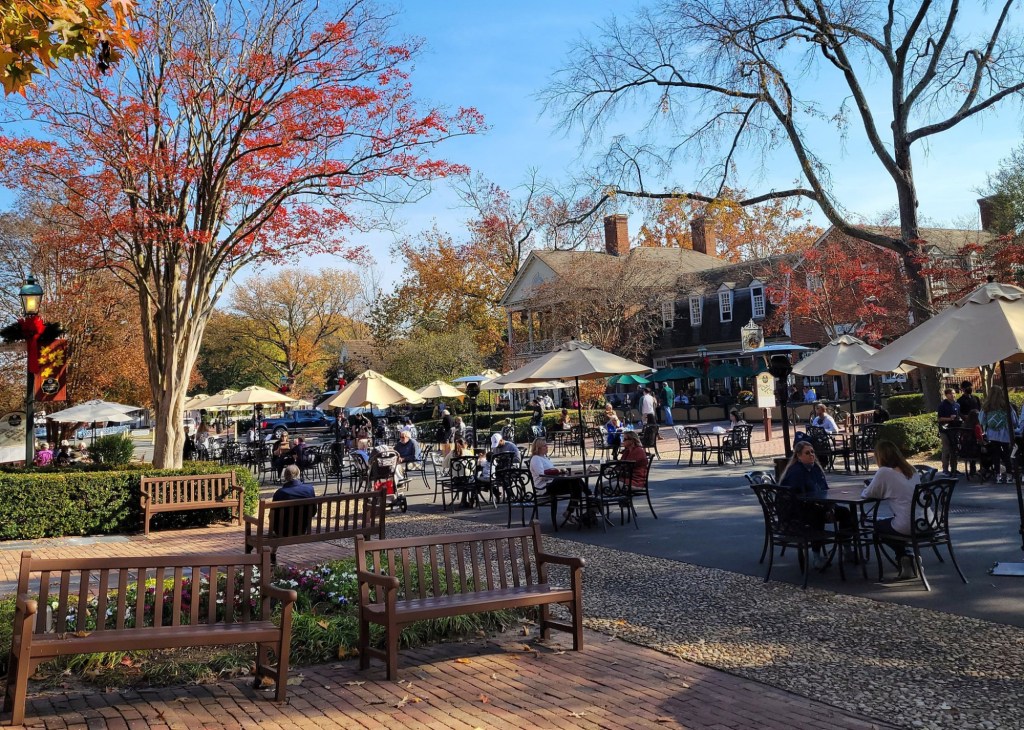Nestled in the heart of Colonial Williamsburg, Merchants Square stands as a unique testament to America’s commercial heritage, seamlessly blending 18th-century charm with modern retail sophistication. This historic shopping district, stretching along the iconic Duke of Gloucester Street, offers visitors an unparalleled experience where colonial architecture houses contemporary businesses, creating a shopping destination unlike any other in the United States.
The Rich History Behind Merchants Square
Merchants Square’s story begins in the 1930s when John D. Rockefeller Jr.’s vision for Colonial Williamsburg included not just restored historic buildings, but also a thriving commercial district that would serve both tourists and local residents. The square was deliberately designed to complement the colonial restoration while providing modern amenities and shopping opportunities.
The architectural planning was meticulous, with every building constructed to reflect 18th-century design principles while incorporating 20th-century functionality. This careful balance has created a shopping environment that transports visitors back in time while offering all the conveniences of modern retail.
North Side Attractions: A Diverse Shopping Experience
The northern stretch of Duke of Gloucester Street in Merchants Square presents a fascinating array of specialty shops and dining establishments, each offering something unique to the visitor experience.
Specialty Retail and Unique Finds
The shops along the north side represent a carefully curated selection of businesses that complement the historic atmosphere while serving contemporary needs. From artisanal crafts that echo colonial traditions to modern boutiques offering unique gifts and souvenirs, these establishments provide shopping experiences that can’t be replicated in typical mall environments.
Many of these businesses specialize in items that reflect Williamsburg’s heritage, including handcrafted jewelry, colonial-inspired home décor, and books focusing on American history. The proprietors often serve as informal ambassadors for the community, sharing stories and insights about both their products and the area’s rich history.
Culinary Destinations
The dining scene in Merchants Square reflects both traditional Virginia cuisine and contemporary culinary trends. Restaurants along the north side offer everything from casual family dining to upscale experiences, many featuring locally sourced ingredients and recipes inspired by colonial-era cooking methods.
These establishments often incorporate historical elements into their dining rooms, creating atmospheric experiences that enhance the overall visit to Colonial Williamsburg. Many restaurants also offer outdoor seating, allowing diners to watch the bustling street life and occasional colonial reenactments.
The Economic Impact of Merchants Square
Merchants Square serves as more than just a tourist attraction; it’s a vital economic engine for the greater Williamsburg area. The square supports dozens of local businesses and provides employment for hundreds of residents. The symbiotic relationship between tourism and local commerce creates a sustainable economic model that benefits the entire community.
Studies have shown that visitors to Colonial Williamsburg typically spend significant time and money in Merchants Square, with many considering it an integral part of their historical experience. This economic activity extends beyond the square itself, supporting local suppliers, service providers, and the broader hospitality industry.
Planning Your Visit: Maximizing the Merchants Square Experience
Best Times to Visit
The character of Merchants Square changes throughout the year, with each season offering distinct advantages. Spring and fall provide ideal weather conditions for walking and outdoor dining, while summer brings extended hours and special events. Winter visits offer a more intimate experience with fewer crowds and unique holiday decorations.
Weekday visits often provide more opportunities for personal interaction with shop owners and restaurant staff, while weekends feature more activity and special demonstrations.
Integration with Colonial Williamsburg
Smart visitors coordinate their Merchants Square shopping with their Colonial Williamsburg itinerary. The square serves as an excellent starting or ending point for historic area tours, and many shops offer items that enhance understanding of the colonial experience.
The proximity to major historic sites like the Capitol, Governor’s Palace, and College of William & Mary makes Merchants Square a natural gathering place and rest stop during extensive sightseeing.
Supporting Local Business and Artisans
One of the most compelling aspects of shopping in Merchants Square is the opportunity to support local entrepreneurs and artisans. Many businesses are family-owned or represent local craftspeople, creating a personal connection between visitors and the community.
These relationships often extend beyond simple commercial transactions, with shop owners serving as informal tour guides and local historians. The personal touch and specialized knowledge available in these establishments provide value that extends far beyond the products themselves.
Future Developments and Preservation Efforts
Merchants Square continues to evolve while maintaining its historic character. Ongoing preservation efforts ensure that new businesses and renovations respect the architectural integrity of the district while meeting modern commercial needs.
The Colonial Williamsburg Foundation works closely with business owners to maintain the delicate balance between commercial viability and historical authenticity. This collaboration has created a sustainable model that other historic districts often study and emulate.
The Broader Cultural Significance
Merchants Square represents more than just a shopping district; it’s a living example of how historic preservation can coexist with modern commercial activity. The square demonstrates that heritage tourism and contemporary business can mutually reinforce each other, creating experiences that satisfy both historical curiosity and practical needs.
This model has influenced similar developments across the United States, showing how communities can leverage their historical assets while supporting local economic development.
Key Takeaways
- Historic Integration: Merchants Square successfully combines colonial architecture with modern retail, creating a unique shopping environment
- Economic Impact: The district serves as a vital economic engine supporting dozens of local businesses and hundreds of jobs
- Cultural Value: Beyond commerce, the square provides educational and cultural experiences that enhance understanding of American colonial history
- Local Support: Shopping in Merchants Square directly supports local entrepreneurs, artisans, and family-owned businesses
- Strategic Location: The square’s position along Duke of Gloucester Street makes it an ideal complement to Colonial Williamsburg historic site visits
- Year-Round Appeal: Different seasons offer unique advantages for visiting, from spring flowers to winter holiday decorations
- Sustainable Model: The district demonstrates how historic preservation and modern commerce can create mutually beneficial relationships
Whether you’re seeking unique gifts, enjoying exceptional dining, or simply soaking in the historic atmosphere, Merchants Square offers an experience that captures the essence of both colonial Virginia and contemporary American entrepreneurship.

Born and raised amidst the hustle and bustle of the Big Apple, I’ve witnessed the city’s many exciting phases. When I’m not exploring the city or penning down my thoughts, you can find me sipping on a cup of coffee at my favorite local café, playing chess or planning my next trip. For the last twelve years, I’ve been living in South Williamsburg with my partner Berenike.

